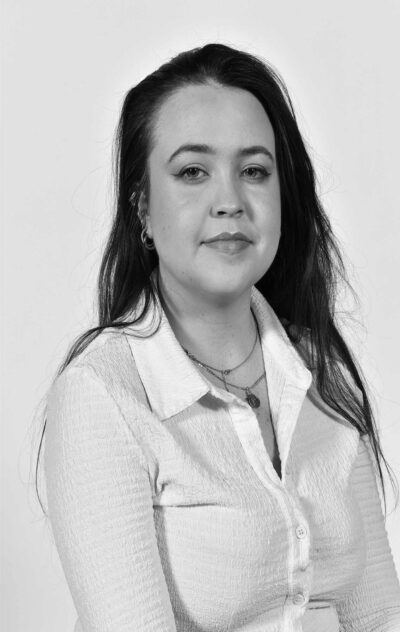Final Project
Humanising Morbid Curiosity through Theatrical Oddities
Historically, we can see a pattern of human morbid curiosity; craving to view the unknown, rare, and unconventional. As trade and print became more widely available, it became easier to seek out these curiosities for audiences who sought to be stunned by unusual sights. A clear example of this is the increase in ‘shock factor productions’ such as the Circus and ‘Freak shows’ in Victorian England.
The more bleak background of this interesting subject is the focus and exploitation of vulnerable members of Victorian society; disabled, deformed and ethnic minorities. To increase the value of these human specimens (alive or otherwise), falsifying stories were paired with individuals as part of the show for audiences. Even modern audiences can sympathise with the fact that once theatrics and showmanship are added to emotive and uncomfortable content, a degree of disassociation occurs, an estranged gap between reality and audience perception.
I intend to close the gap. The gap between the performer and the audience, in the hope this will encourage an inward as well as outward reflection on what makes us stare, look away, or in some cases both when faces with the curious and morbid. We may not be so far from the historical figures we now criticise, and this is an opportunity to give this some contemplation. I have aimed to combine the beautiful, with the revolting. The use of jarring textures, colour, and detail provide confront the concepts I have researched. I aim to combine both the grotesque, with the exquisite; enhancing the abnormal in ways you may not expect.
My initial focus was on the largest human canvas, the skin. I used this concept to contort and embellish textures in a way to make a very usual sight into something surreal. By studying specimen jars and preserving human flesh. Taking from equally curious minds throughout history, the anatomical drawings of Andrea Vesalius in his pioneering work ‘The Fabric of the Human Body’ (1543) were an inspiration for my work.
To create my final pieces, I investigated a series of explorative and experimental textures through printing with untraditional techniques such as using excessive expantex on shear fabrics and dying fabric in untraditional orders. I used unconventional materials such as clay, resin, latex, and paint together to experiment with the reactions and textures they could create. The patterns and textures created were unpredictable, and so almost organic in nature themselves. I push the boundary with hand embroidery and manipulate latex to create a sculptural prosthetic to emulate surrealist body parts. This was with the aim of creating an haute couture experimental collection that demonstrates a high standard of hand craftsmanship throughout. Taking inspiration from designers such as Schiaparelli, and Alexander McQueen and studying new designers such as Kate Casanova and Andreea Mandre to push the boundaries with the human body and flesh through bold silhouettes and innovative materials.
This was fundamental in the pursuit to create an environment which stimulated our senses and provided an opportunity for self-discovery and to challenge our own morbid curiosity in the process.
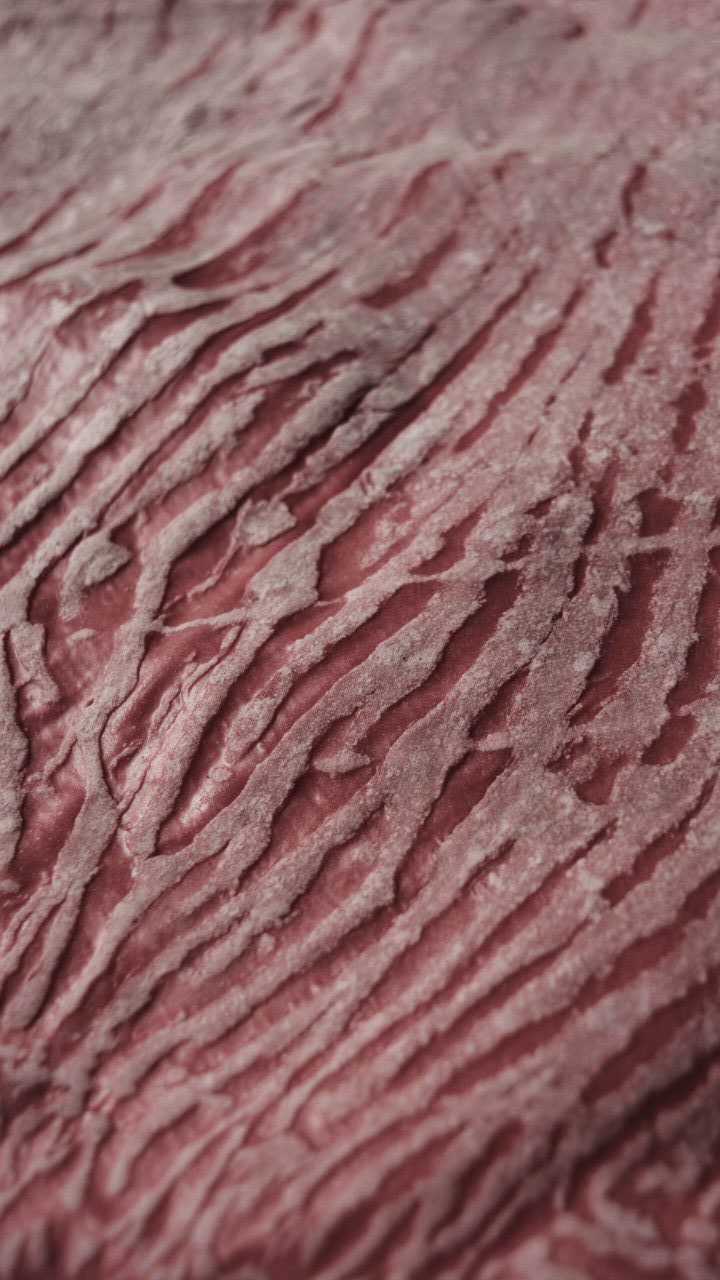
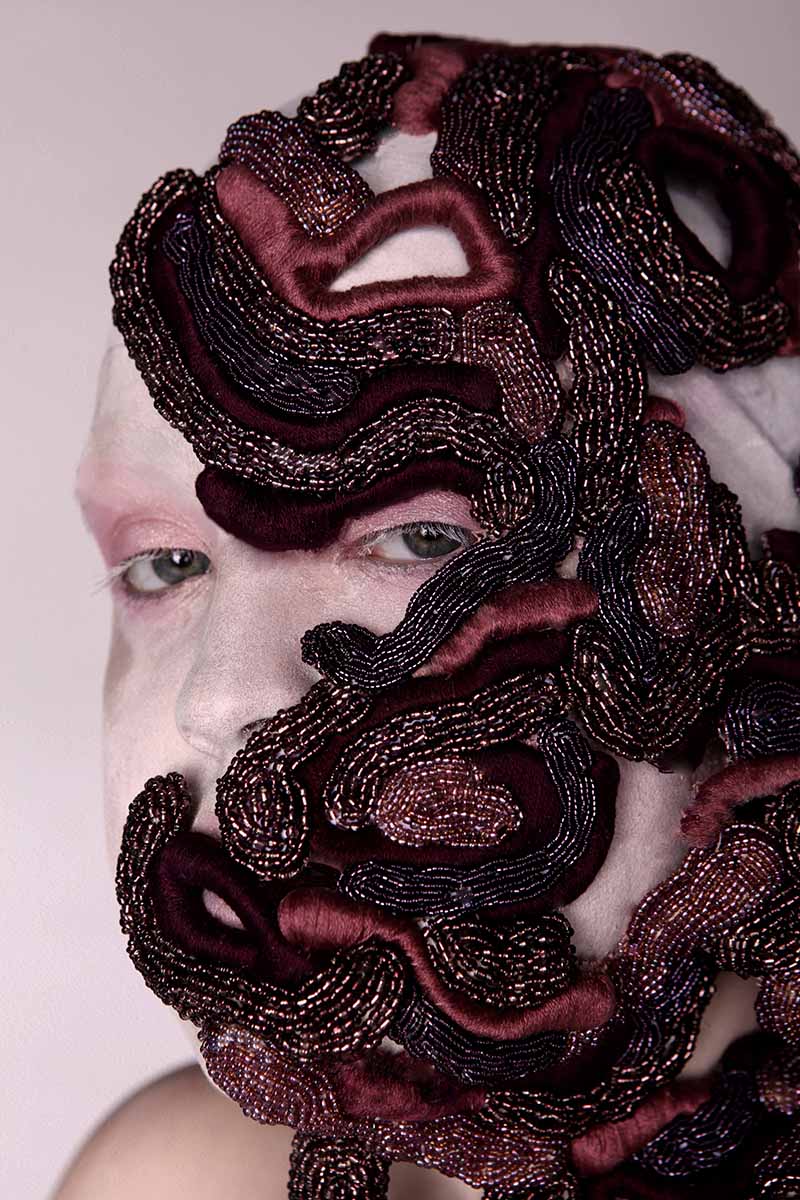
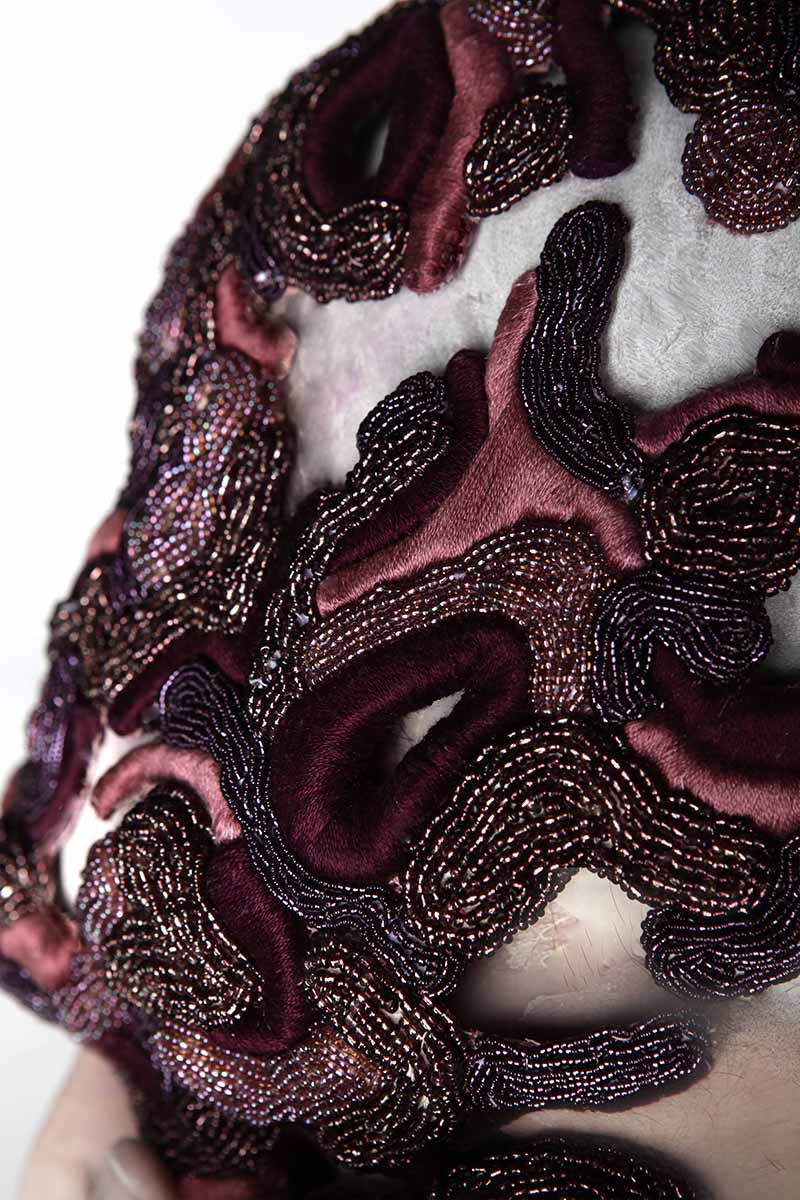
Mottled Flesh
This piece is completely handcrafted and made by hand using 3D embroidery and beading techniques. Using all-natural materials such as glass cotton and straw. Inspired by shapes found from mottled burnt and distorted skin through primary photography. Combining technique and shape that encapsulates half of the face reduces your senses creating textual mottled skin that covers the ear mouth and some of the eye.
The Growth
This skin-like material incorporates the tonality and feel of real skin when interacting with the piece. This print process was developed through experimentation and technical development. In order to simulate an all-consuming growth and body of flesh that demobilises and consumes the body rendering the wearer restricted.
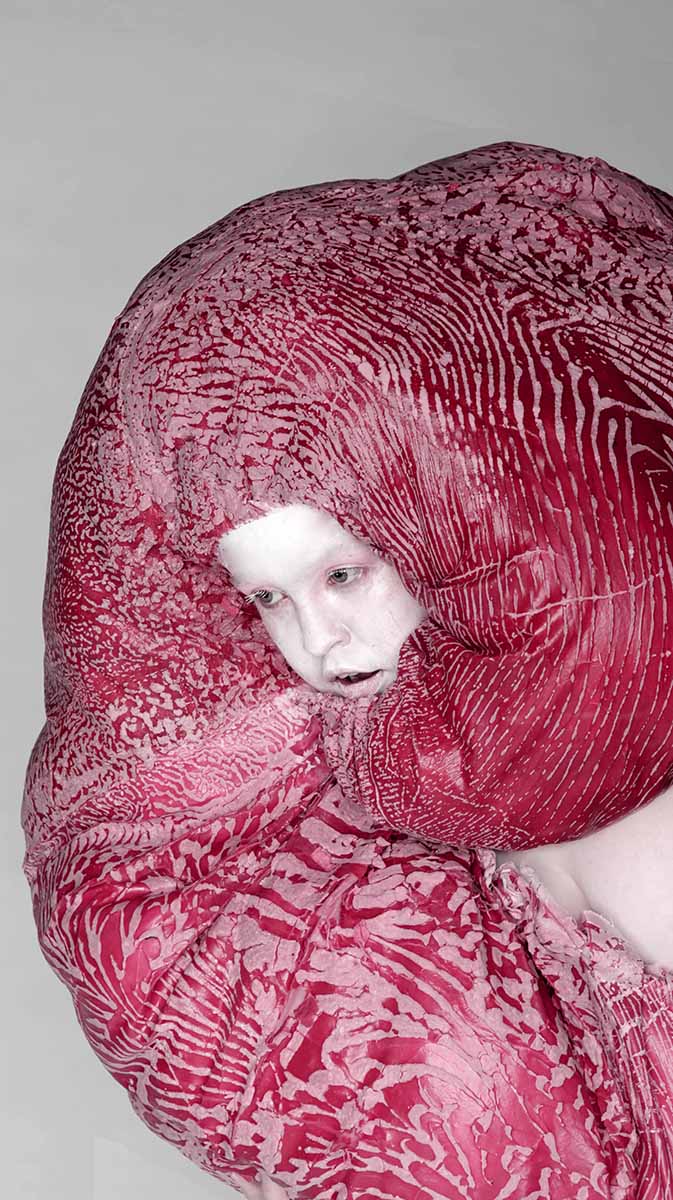
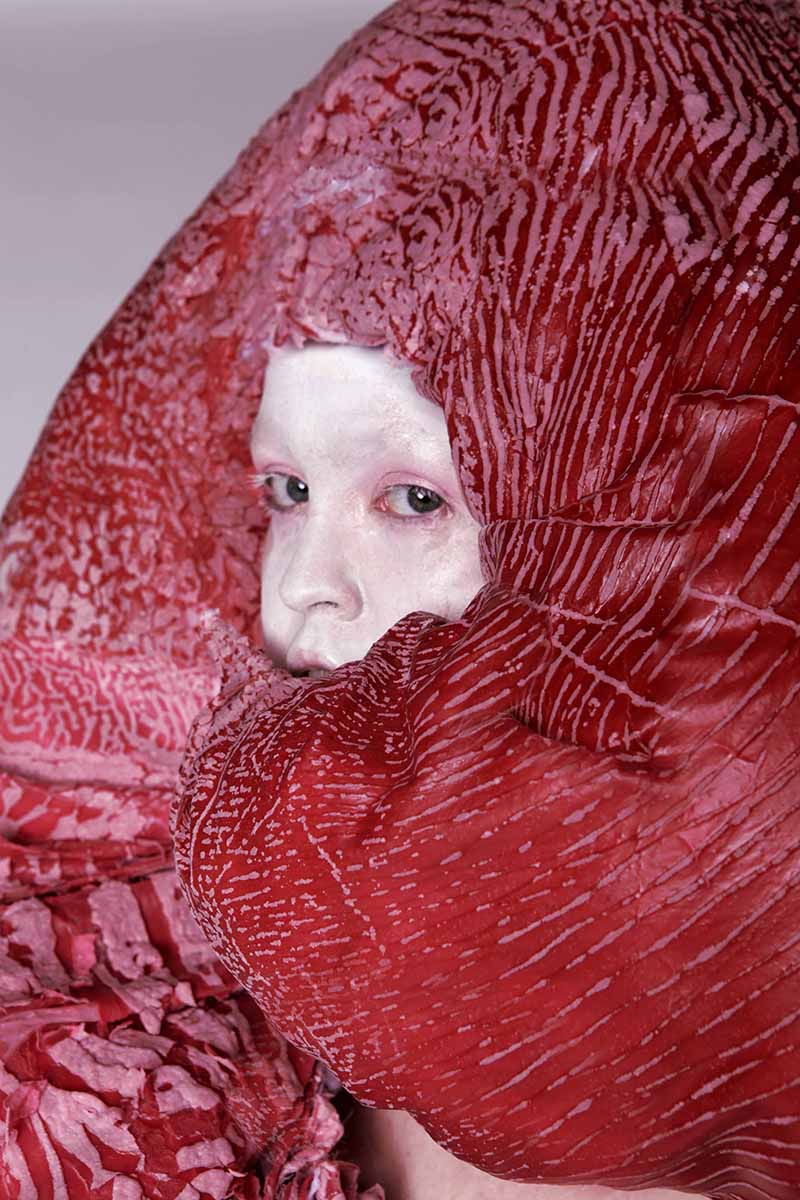
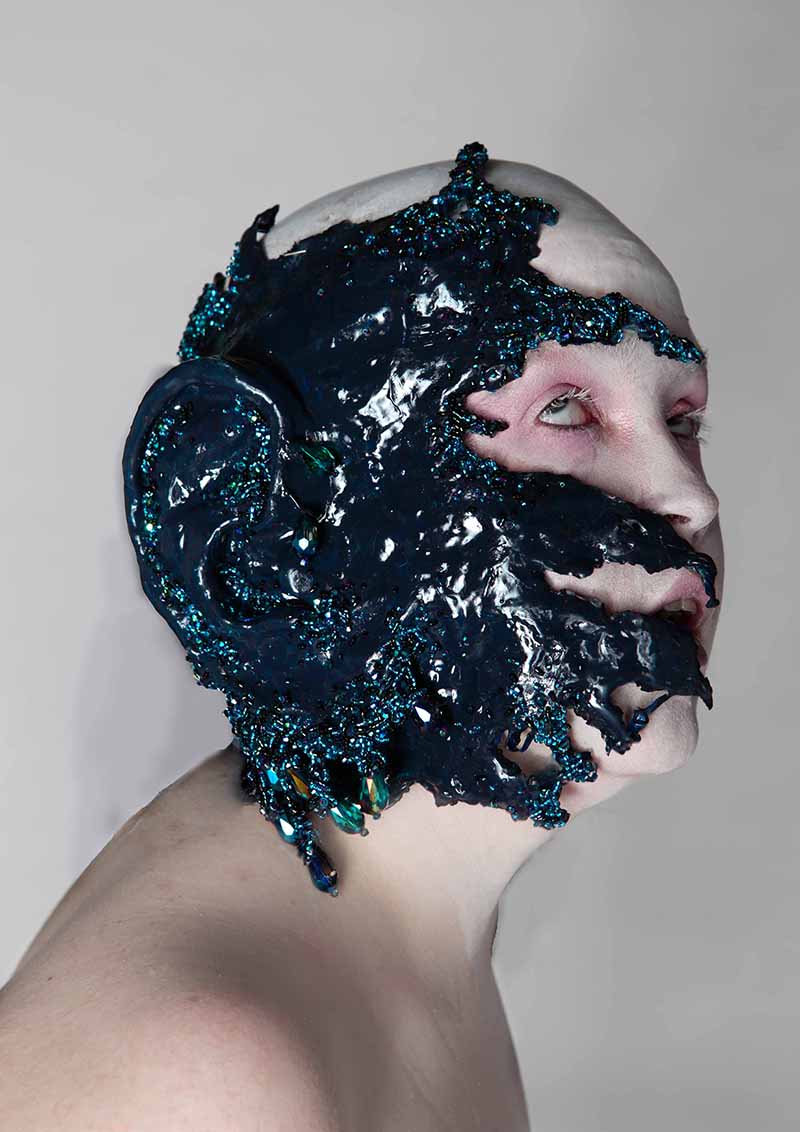
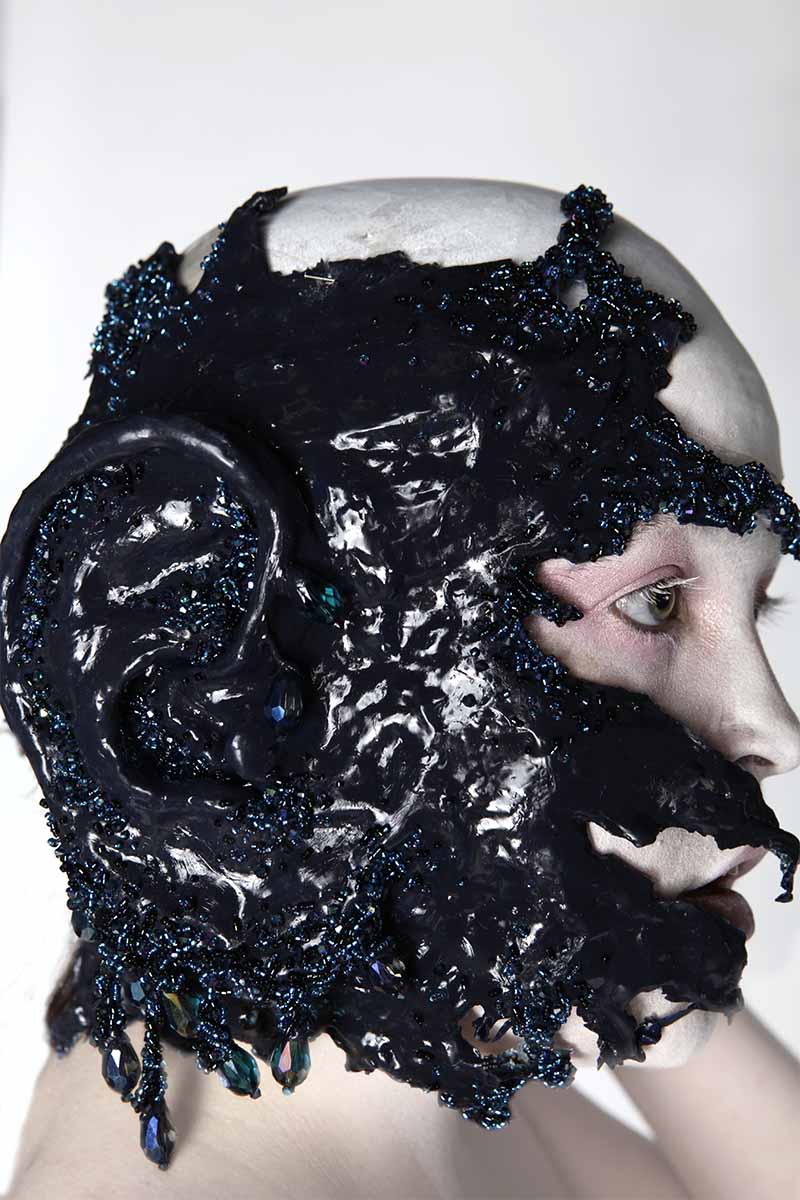
Disproportion
The large dripping ear is made from latex sinamay and crystals and glass beads. The ear plays and challenges aesthetic proportions creating discomfort and curiosity by simply enlarging a piece of the body and paying homage to the falsification of body parts which was commonly seen in Victorian freak shows. This piece is shot with soft light with a stark white background to create an almost clinal feel to the images. The white drained skin with pink pigment surrounding the eyes creates an almost ill-like look which is necessary for the viewer to feel sorrow towards the character within the photo.
Restricted
This piece is made from felt, sinamay, rope, clay, resin and latex. This piece plays with restricting and manipulating the body by elongating the neck and restricting movement with the neck which can be deemed as an act of torcher however these types of restrictions can be seen throughout history in corsetry and ancient beliefs such as Chinese foot training which ultimately disfigures the body for aesthetics and status. The organ-like shaped drops wear inspired by old surgery text depicting how organs hang from the body. Now these embellishments almost look like they are growing out from the neck.
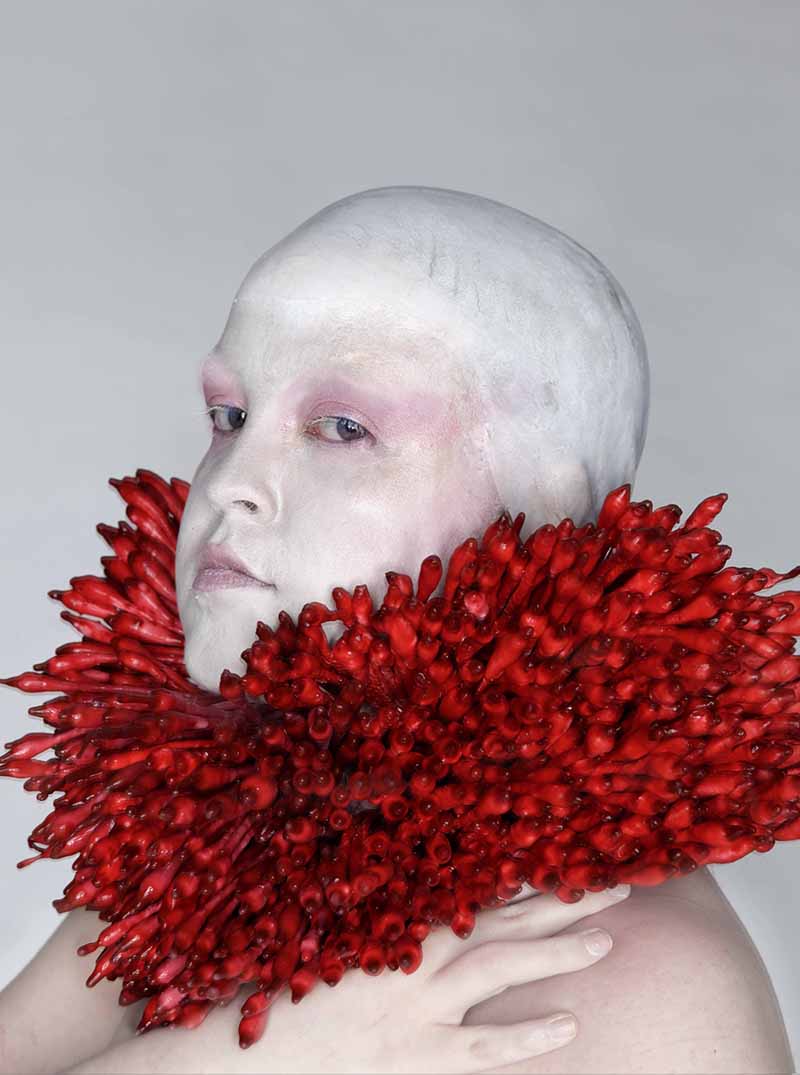
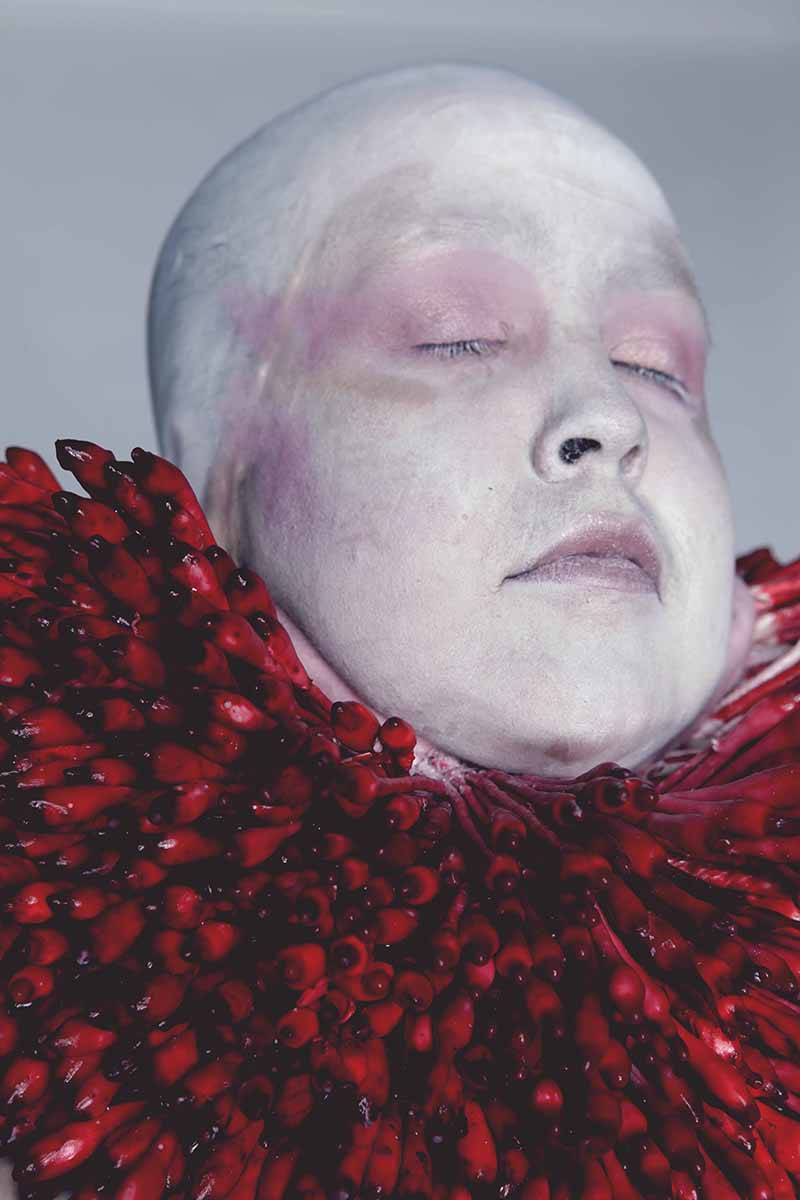
Experimental Textures
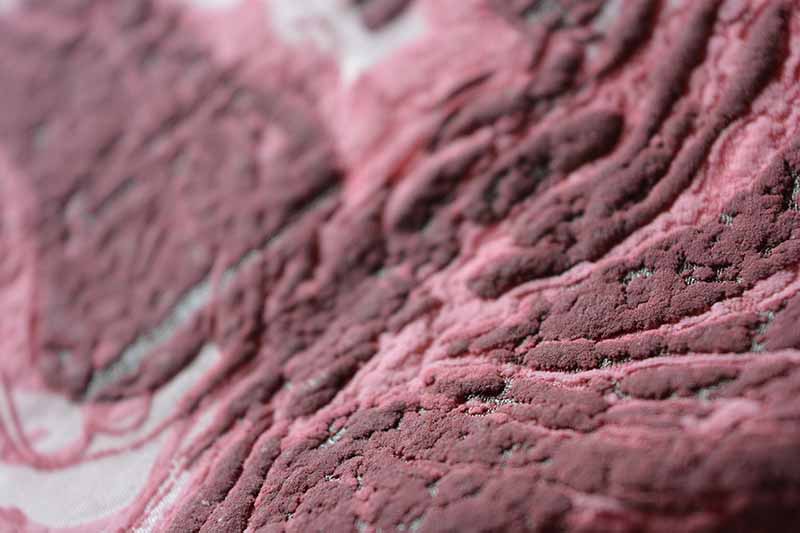


Some examples of texture and material sample experimentation playing with different techniques and materials such as latex resin printing ink and expantex in order to create off-putting and body-like skin textures.
Work Experience
Throughout my placement year, I experienced working at a fashion house developing my embroidery and beading skills for 4 months which can be seen in this project.
After that, I then went on to work for Jess Collett Milliner for 9 months where I learnt how to create sculptural structures in order to manipulate fabric around the body and work with alternative and interesting embellishments.
Visionary Thinkers
Visionary Creators
Visionary Makers
